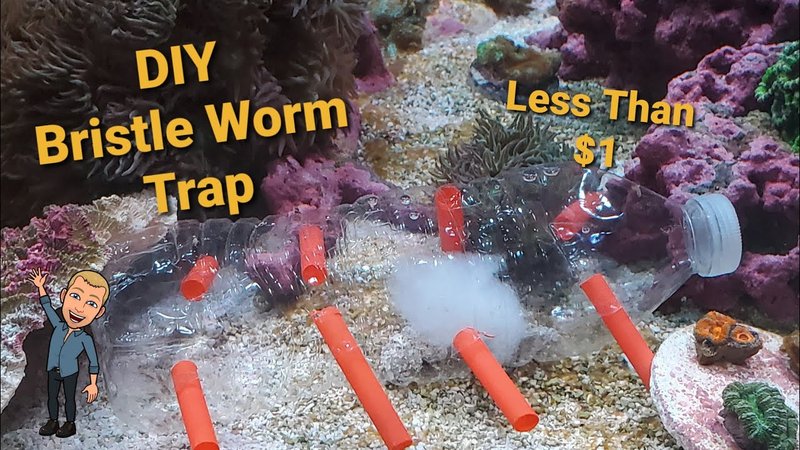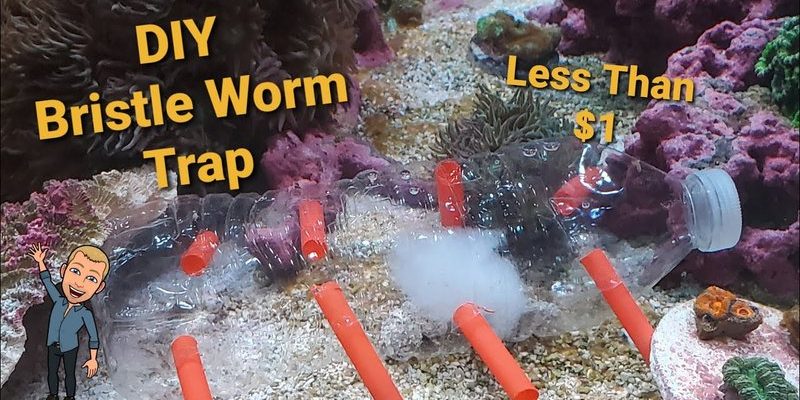
So, how can you ensure your tank stays spick and span while reducing the chances of a bristle worm invasion? Let’s dive into the ins and outs of tank cleaning routines that keep your aquarium healthy and your bristle worm population in check. We’ll explore the best practices, tips, and even some tricks to help you maintain your aquatic haven, whether you’re a proud owner of a Fluval or another popular brand.
Understanding Bristle Worms and Their Role in the Aquarium
Before we go all out on tank cleaning routines, it’s essential to understand what bristle worms are. These critters are segmented worms that can thrive in both freshwater and saltwater tanks. While they do play a beneficial role in your aquarium ecosystem by breaking down organic waste, their numbers can quickly spiral out of control. You might be wondering, where do they come from? Well, they often hitch a ride on live rock, sand, or even new fish.
Additionally, they have a talent for multiplying. A few can turn into dozens in no time if there’s plenty of food around, like leftover fish food or decaying plant matter. So, managing their population starts right at the cleaning routine level. By keeping the tank clean and maintaining a balanced ecosystem, you can create an environment where they can’t thrive.
Establishing a Regular Cleaning Schedule
Imagine your aquarium like a garden; it needs regular care to flourish. Establishing a consistent cleaning schedule is crucial for minimizing bristle worms. A bi-weekly or monthly cleaning routine should be your go-to approach.
Here’s a simple plan:
- Weekly Spot Checks: Keep an eye on any visible waste and algae buildup. A quick vacuum of the substrate can go a long way.
- Bi-weekly Water Changes: Aim to replace 10-20% of the water, removing any excess nutrients that can fuel bristle worm growth.
- Monthly Deep Cleaning: This includes scrubbing the tank walls, cleaning filters, and more thorough substrate vacuuming.
Sticking to this schedule not only keeps the tank looking great, but it also limits the food source for bristle worms. Take it from me; consistency is key in any cleaning routine!
Using Quality Filtration to Reduce Waste
Your aquarium filter is like the heart of your tank—it keeps everything flowing smoothly. A good filtration system helps eliminate organic waste, which is a primary food source for those pesky bristle worms. Investing in a quality filter that’s appropriate for your tank size can’t be understated.
Here’s what to consider when choosing a filter:
- Types of Filters: Hang-on-back (HOB) filters, canister filters, and sponge filters each have their pros and cons. HOB filters are excellent for ease of maintenance while canisters offer superior filtration.
- Filter Media: Use a combination of mechanical, biological, and chemical media to create a balanced environment. Activated carbon can help absorb impurities, while sponge filters can promote beneficial bacteria.
- Regular Maintenance: Clean or replace filter media according to the manufacturer’s instructions to ensure optimal performance.
By reducing waste and toxins through quality filtration, you’ll create an environment less hospitable for bristle worms, allowing your fish to thrive.
Understanding Your Feeding Habits
Feeding your fish is another critical factor in managing bristle worms. Overfeeding can lead to excess food sinking to the bottom, where bristle worms eagerly await their next meal. Here’s the thing: it’s better to underfeed than to overfeed. Fish only need a small amount of food that they can consume in a couple of minutes.
Try these tips for a healthier feeding routine:
- Portion Control: Use a measuring spoon to ensure you’re not giving too much food at once.
- Feed Less Often: Consider feeding every other day instead of daily. This encourages your fish to forage and keeps the substrate cleaner.
- Choose Quality Food: High-quality, slow-sinking pellets or flakes can reduce waste in the tank.
By monitoring feeding habits, you’ll not only keep your fish healthy but also minimize excess waste that leads to bristle worm growth.
Using Live Plants and Cleanup Crew for Balancing Ecosystem
Adding live plants to your aquarium is like bringing a garden into your underwater world. They provide natural filtration and absorb nitrates, which can help keep bristle worms at bay. Plus, they create a more enriching environment for your fish.
Consider these aspects when adding plants:
- Choose Fast-Growing Species: Plants like Java Fern or Anubias can help compete with bristle worms for nutrients.
- Introduce a Cleanup Crew: Snails and certain types of shrimp can help consume leftover food and detritus, limiting what bristle worms can thrive on.
- Don’t Overcrowd: Make sure to strike a balance so plants can thrive without blocking light or space for your fish.
By incorporating plants and a cleanup crew, you’re essentially giving your tank a natural ecosystem that helps keep bristle worms in check.
When to Consider Chemical Treatments
Sometimes, despite our best efforts, bristle worms can still become an issue. In such cases, you might consider using chemical treatments. However, use these with caution as they can affect your entire tank’s ecosystem, including your fish and beneficial bacteria.
Here are some guidelines:
- Consult with Experts: Talk to knowledgeable staff at your local aquarium store or a vet specializing in fish before choosing a treatment.
- Targeted Options: Look for treatments specifically designed to minimize bristle worm populations without harming your other tank inhabitants.
- Monitor the Tank: After treatment, keep a close eye on the tank’s health and the behavior of your fish.
Chemical treatments should be the last resort after exhausting other cleaning and maintenance methods.
The Importance of Observation
Lastly, the best cleaning routine isn’t just about cleaning—it’s about observation. Regularly watching your tank can help you catch any potential problems before they escalate into a full-blown bristle worm infestation.
Here’s what to look for:
- Check for Signs of Overgrowth: If you start to see more bristle worms than usual, it might be time to reevaluate your cleaning schedule and feeding habits.
- Watch Your Fish: Observe if they are acting differently or seem stressed, as this can indicate an imbalance in the tank.
- Inspect Water Quality: Regular testing for ammonia, nitrites, and nitrates will help you identify issues before they attract unwanted guests.
Being proactive and observant can make a significant difference in maintaining a healthy aquarium.
In conclusion, keeping your tank clean and minimizing bristle worms is all about consistency, balance, and observation. By establishing a regular cleaning routine, improving your feeding habits, and utilizing the natural ecosystem of plants and cleanup crews, you can create a thriving environment for your aquatic life. Remember, managing bristle worms is a journey, not a destination. Stay vigilant, keep learning, and your aquarium will flourish!

